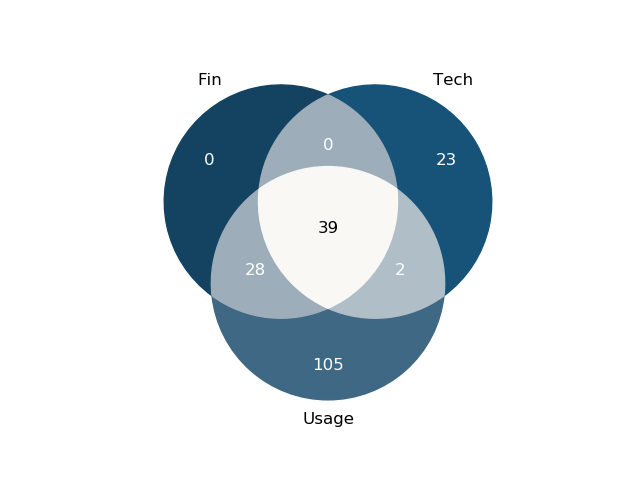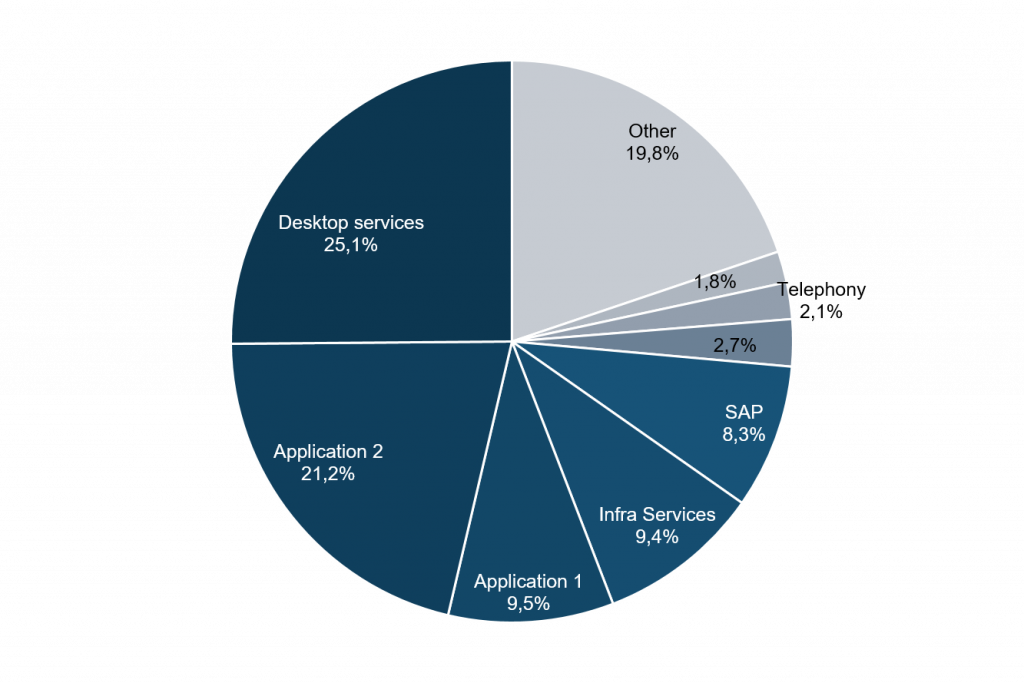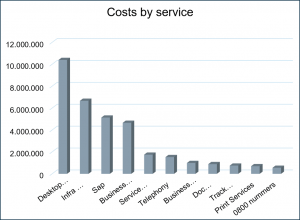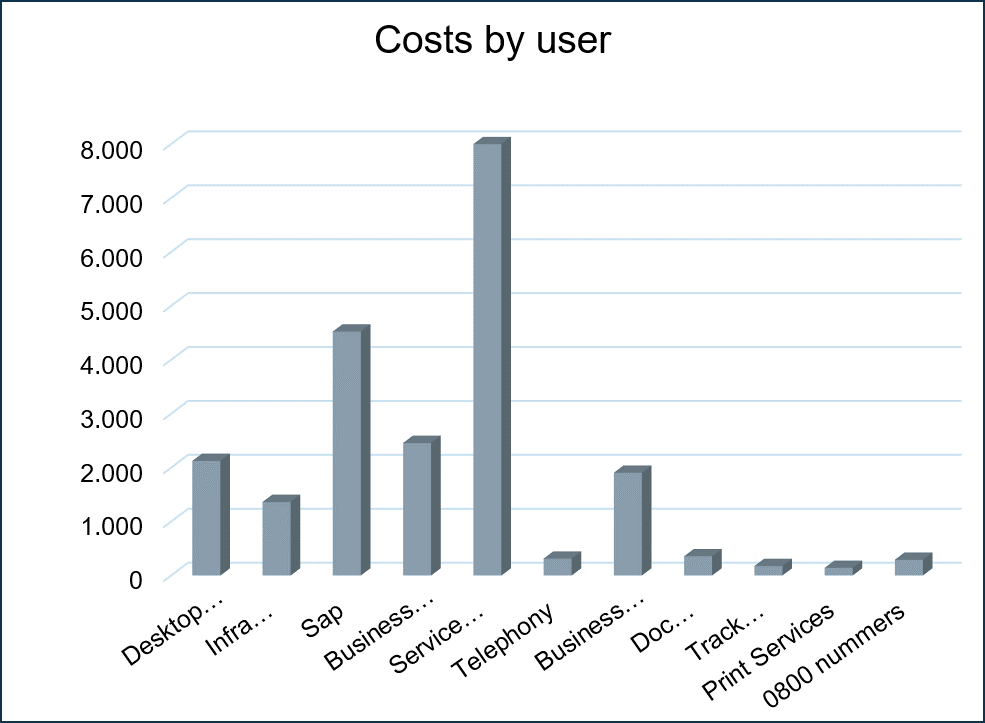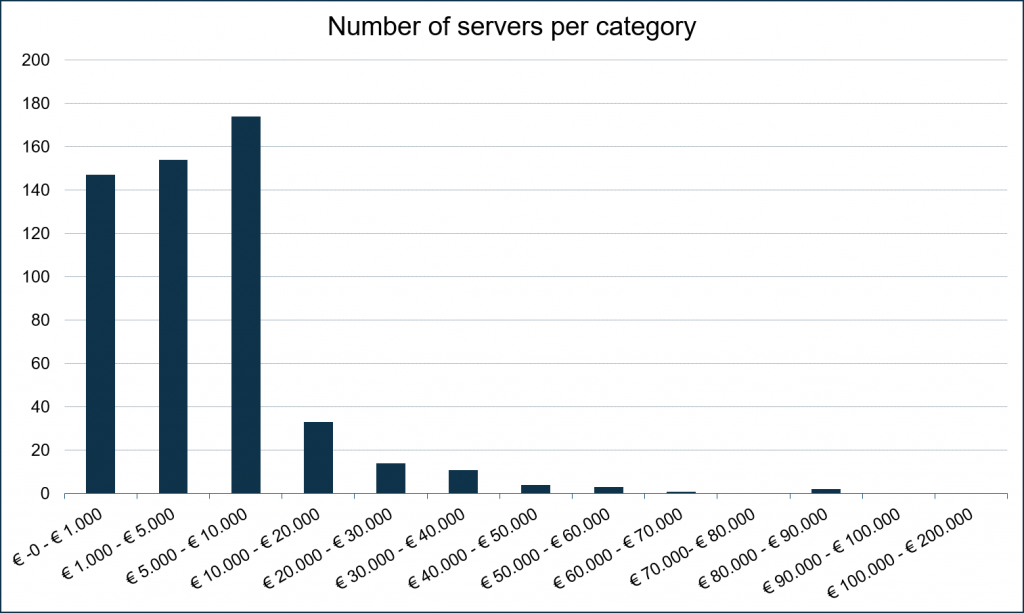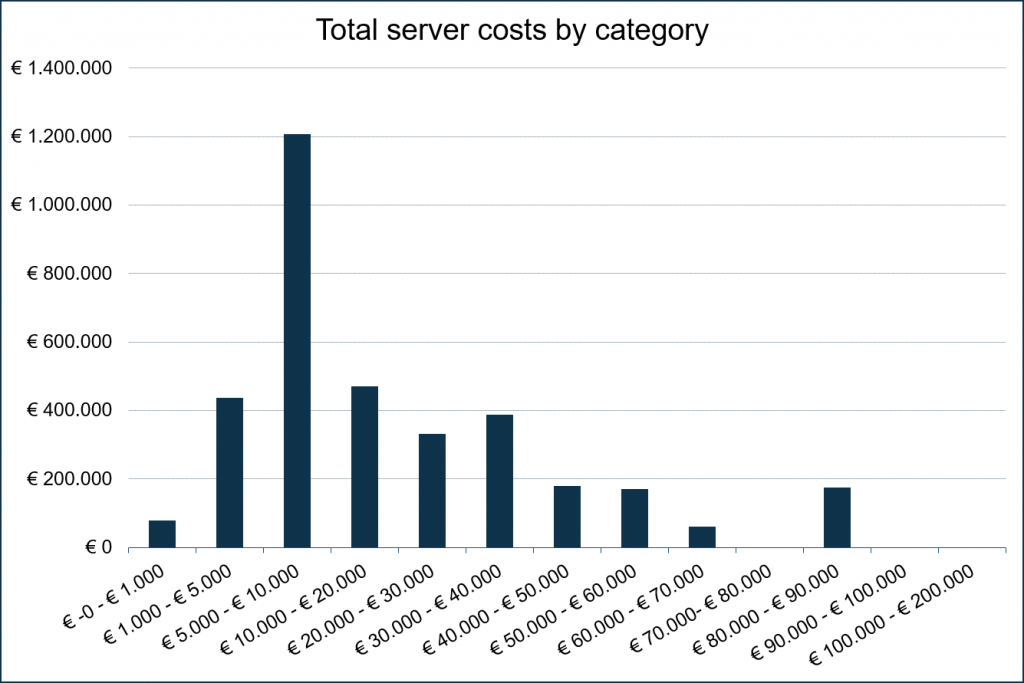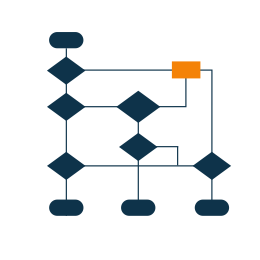WHY eV-ict?
Within an organisation, people are often unaware of where IT costs originate. Shadow IT in particular is a common problem. Shadow IT are costs that are processed with an incorrect accounting entry. eV-ict helps to shine a light on these incorrect entries and provides factual insight into all ICT costs by amassing data from three different domains:
- Finance: these are the costs of all IT resources and the IT costs of all IT employees involved.
- Technology: the technology domain provides information on all applications and licences in use, including the organisation’s IT infrastructure and management.
- Organisation: the organisation department provides data relating to users and use, faults and charge-ons.
Experience shows that information from technical and financial sources overlaps the most—see the figure above.
Some examples of reports that can be generated with the aid of the eV-ict data model:


